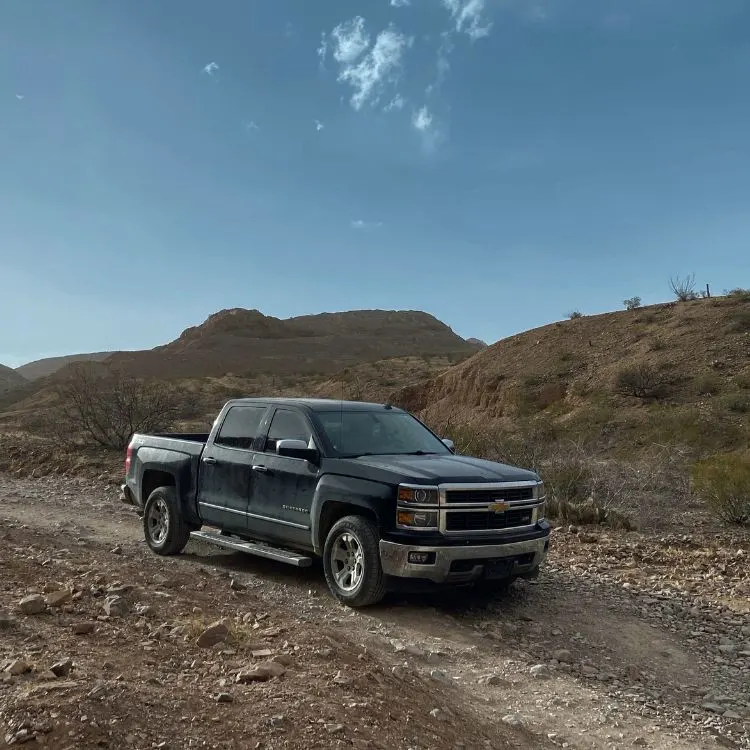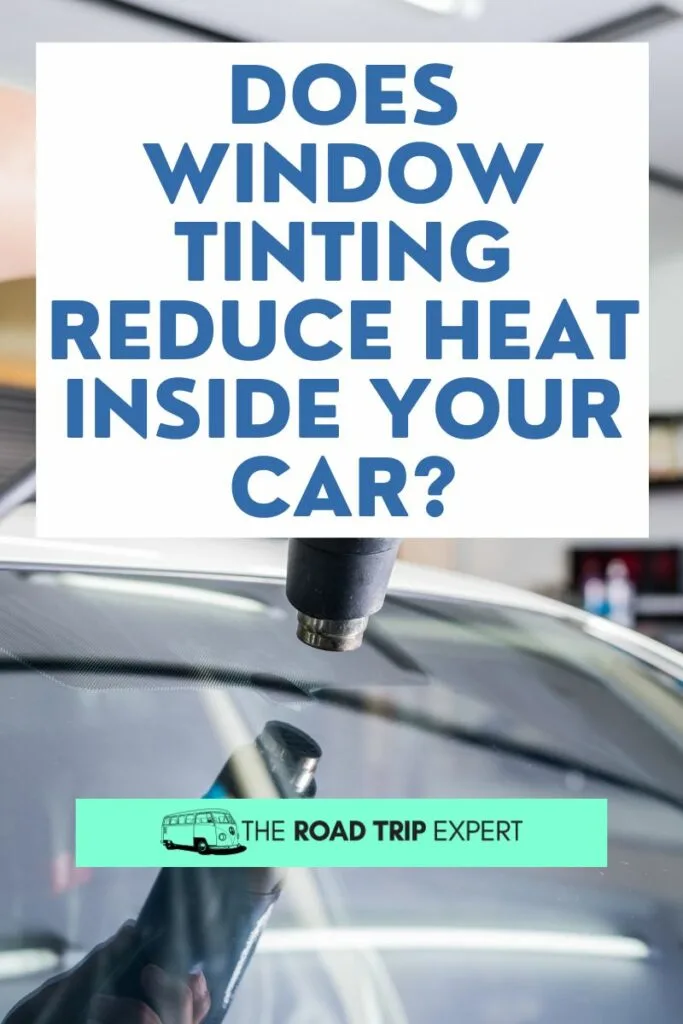Summer days bring the joy of sun-soaked adventures, but there’s one aspect many dread: the stifling heat inside a parked car. We’ve all experienced that moment of hesitation before opening a car door, bracing ourselves for the wave of heat that’s about to hit. But what if there was a way to significantly reduce that discomfort?
Does Window Tinting Reduce Heat Inside Your Car?
Window tinting can reduce heat inside your car, acting as a barrier blocking the sun and reducing the heat inside your car. Darker tints block more heat, and the type of tint is crucial. Ceramic tints are considered the best for heat reduction due to their advanced technology that blocks UV rays and infrared radiation. However, the allowed tint percentage varies by region and state.
In this article, we’ll dive deeper into window tints, exploring their benefits, understanding how they work, and providing guidance on choosing the right tint for your vehicle. If you’re looking to make those summer drives more bearable, we’ve got you covered.
Benefits Of Car Window Tints
While the primary allure of car window tints is their ability to combat the summer heat, their advantages extend far beyond temperature control:
- UV Protection: Window tints act as a shield against harmful ultraviolet rays, reducing the risk of skin damage and preventing the car’s interior from fading.
- Privacy: Tinted windows offer an added layer of privacy, ensuring that prying eyes can’t easily see into your vehicle. This is one of the main reasons we insisted on tinted windows for our truck.
- Aesthetics: Beyond their functional benefits, tints enhance a car’s appearance, giving it a sleek and polished look. I’ll be honest, I love the way the truck looks with tinted windows.
- Prolonged Interior Life: By blocking UV rays and reducing heat, tints help preserve the car’s interior, preventing cracks, warps, and fading of upholstery.
In essence, window tints are a multifaceted solution, offering both protective and aesthetic benefits for your vehicle.
What Are Car Window Tints?
Car window tints are thin film layers applied to the interior side of vehicle windows. They provide privacy, reduce glare, block harmful UV rays, and, as we’ve discussed, mitigate the sun’s heat.
They’re crafted from various materials, including dyed polyester, metalized films, carbon, and ceramic. Each material has distinct benefits, from basic UV protection with dyed tints to advanced heat and UV-blocking capabilities with ceramic.
When choosing a tint, it’s essential to consider both its purpose and the material to ensure optimal performance and longevity.
- SIZE: 24 in. x 6.5 ft. – Enough to cover two side…
- OUR BEST HEAT REJECTION WITH CERAMIC INNOVATION:…
- DARKEN WINDOWS: Upgrade your style with 80% light…
Is Window Tint Legal?
Window tinting is subject to legal restrictions that vary based on location. Most countries and states have regulations governing the darkness of the tint, or its “VLT” (Visible Light Transmission) percentage.
This percentage indicates the amount of light the tint allows to pass through. For instance, a 35% VLT means the tint only allows 35% of the visible light to pass, making it relatively dark.
While many regions permit tints that block out a significant amount of light for rear windows, front windows and windshields often have stricter regulations to ensure driver visibility and safety.
Before opting for window tinting, it’s imperative to consult local laws to avoid potential fines or the need for costly removals.
Things get a little tricky when you’re traveling the entire country like we are full time in an RV (check out our travels at @peaceloveandfamilyadventures), but we’ve never run into any problems. As long as you don’t have tint in the single digits you should be fine.
How Much Heat Can Window Tinting Block?
The effectiveness of window tinting in blocking heat largely depends on the type of tint used. Here’s a breakdown of the heat reduction you can expect with different tints:
- Dyed Tints: Blocks about 20-50% of the sun’s heat. This is the most basic form of tint, primarily used for aesthetics.
- Metalized Tints: Reflects about 40-60% of the heat due to its metallic particles. It’s also durable and doesn’t fade over time.
- Carbon Tints: Offers around 40-70% heat reduction. It has the added benefit of not fading and provides a matte finish.
- Ceramic Tints: The most advanced option, blocking approximately 50-80% of heat. It’s known for its ability to block UV rays and infrared radiation without reducing visibility.
While these percentages give a general idea, it’s essential to note that the actual heat reduction can vary based on the brand and quality of the tint. Always consult with professionals and check product specifications for precise information.
Check Out Some More Of Our Car Related Guides:
- How Long Can You Leave Your Car Running?
- Do Car Sunshades Work?
- How Many Miles On A Used Car Is Too Much?
- How Far Is Too Far To Drive To Work?
- Are Car Covers Worth It?
How Does Window Tinting Reduce Heat Inside A Car?
Window tinting filters the sun’s rays, reducing the heat that penetrates the car. The tint’s ability to block ultraviolet (UV) rays and infrared radiation is key.
UV rays can fade car interiors and harm our skin, while infrared radiation is the primary culprit behind the heat we feel. By obstructing these rays, window tints ensure the car’s interior remains relatively cooler.
Different tint materials play distinct roles in this heat reduction. For instance, dyed tints primarily absorb UV rays, metalized films reflect heat away due to their metallic particles, and ceramic tints, being the most advanced, block both UV and infrared radiation without reducing visibility. The choice of material directly impacts the tint’s effectiveness in keeping your car cool.

Why Should You Use Window Tinting To Keep Your Car Cooler?
Window tinting offers more than just an aesthetic upgrade to your vehicle. Here are the practical benefits of reducing heat through window tinting:
- Enhanced Comfort: No more entering a sweltering car or burning yourself on a hot seat. Tinted windows maintain a more comfortable interior temperature.
- Protection of Car Interiors: Prolonged exposure to direct sunlight can fade and damage your car’s upholstery. Tinting protects against UV rays, preserving the interior’s color and integrity.
- Reduced Need for Air Conditioning: With a cooler interior, there’s less reliance on air conditioning, leading to better fuel efficiency and prolonged AC life.
- UV Protection: Beyond heat, window tints block harmful UV rays, protecting both the car’s interior and its occupants from potential sun damage.
- Privacy and Security: Darker tints provide added privacy, deterring potential break-ins as valuables are less visible from the outside.
By considering these benefits, it’s clear that window tinting is a valuable investment for both your comfort and your car’s longevity.
How Do I Pick the Right Window Tint to Reduce Heat?
Choosing the right window tint involves more than picking a percentage. First, consider your climate. A higher heat-reducing tint is essential in areas with intense sun, which was one of the challenges of RV life when we were in Florida.
Some vehicles also benefit from specific tints due to their window size or shape. Personal preferences also play a part. If you like aesthetics like I do, darker or mirrored tints might be appealing.
Lastly, set a budget. While it’s tempting to go for the cheapest option, remember that higher-quality tints, like ceramic ones, although pricier, offer superior heat reduction and durability.
- 【9 in 1 Window Tint Tools】: Package included 9…
- 【Install Any Places Easily】: Blue rubber…
- 【500ml Spray Bottle】: Vehicle glass protective…
Can You See at Night with Tinted Windows?
While beneficial during the day, tinted windows can pose visibility challenges at night. A lighter tint, such as 70% (allowing 70% of light in), will have minimal effect on nighttime visibility.
However, as the tint darkens, the potential for reduced visibility increases. Tints like 20% or 5% can significantly darken the view inside the car, making it harder to see pedestrians, obstacles, or other vehicles.
It’s essential to strike a balance between daytime benefits and nighttime safety. When choosing a tint, consider your regular driving conditions and prioritize a percentage that ensures clear visibility day and night. We mostly drive during the day, so we don’t have to worry about our tint at night.
Wrapping Up: Does Window Tinting Reduce Heat Inside Your Car?
Window tinting is a game-changer for those seeking relief from the intense heat of parked cars during summer. Window tints act as a protective barrier, significantly reducing the sun’s heat.
Darker tints generally offer more heat reduction, but the type and material of the tint play pivotal roles in its effectiveness. While the benefits are numerous, be aware of local legal restrictions concerning tint percentages.
Investing in window tinting is not just about comfort; it’s about prolonging the life of your car’s interior and ensuring a more enjoyable driving experience. Make an informed choice, and enjoy a cooler, more comfortable ride!




